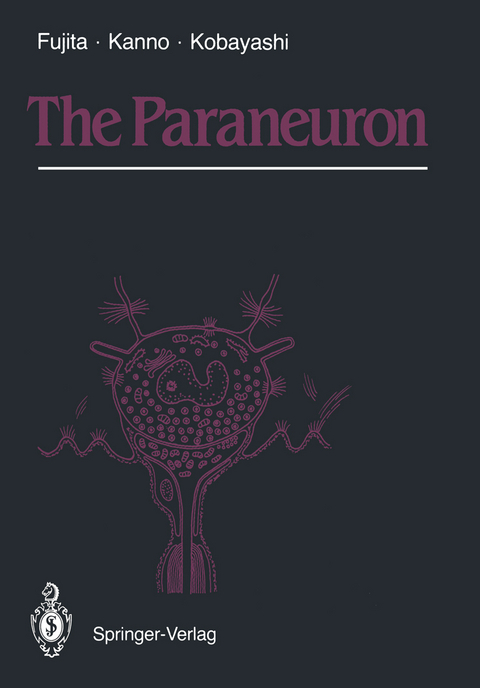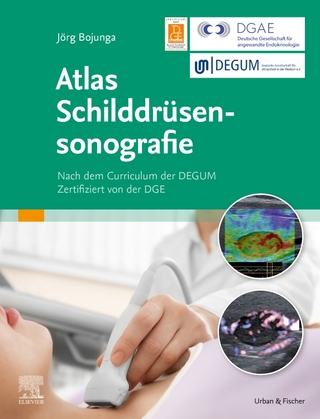
The Paraneuron
Springer Verlag, Japan
978-4-431-68068-0 (ISBN)
I. General Part.- 1. Historical Background.- 1.1 Criteria for Neurons.- 1.2 Bridges Connecting the Nervous and Endocrine Systems.- 1.3 Summary.- 2. What are Paraneurons?.- 2.1 Origin of the Concept.- 2.2 Criteria for Paraneurons.- 2.3 The Paraneuron Family.- 2.4 General Structure of Paraneurons.- 2.5 Spectrum of Neurons and Paraneurons.- 2.6 Summary.- 3. Secretions and Secretory Granules.- 3.1 Secretory Granules.- 3.2 Formation of Secretory Granules.- 3.3 Maturation of Secretory Granules.- 3.4 Contents of Secretory Granules.- 3.5 Contents of Small Vesicles.- 3.6 Biosynthesis of Peptides and Messenger Substances.- 3.7 Coexistence of Secretory Substances.- 3.8 Summary.- 4. Stimulus-Secretion Coupling.- 4.1 Receptosecretory Nature of Neurons and Paraneurons.- 4.2 Receptor and Stimulus Recognition.- 4.3 Various Modes of Stimulus Transformation.- 4.4 Release of Granule Contents.- 4.5 Summary.- 5. Neurons As Secretory Cells.- 5.1 Secretory Granules and Vesicles of Neurons.- 5.2 Contents of Granules and Vesicles.- 5.3 Multiple Secretions and Dale’s Law.- 5.4 Multipolar (Dendritic) Secretion.- 5.5 Summary.- 6. Transport of Messenger Substances to Targets.- 6.1 Routes and Ranges of Messenger Transport.- 6.2 Continuity of Transmitters and Hormones.- 6.3 Summary.- 7. Effects of Messenger Substances.- 7.1 Continuity Between Modes of Actions of Messenger Substances Released from Neurons and Paraneurons.- 7.2 Critical Account of Neurotransmitters and Neuromodulators.- 7.3 Diverse Actions of Messenger Substances.- 7.4 Summary.- 8. Ontogeny and Kinetics of Paraneurons.- 8.1 Concepts on the Origins of Paraneurons.- 8.2 Cell Kinetics of Paraneurons.- 8.3 Aging of Paraneurons.- 8.4 Ontogeny of Some Paraneurons.- 8.5 General Considerations.- 8.6 Summary.- 9. Subsidiary Neuronlike Features of Paraneurons.- 9.1 Association with Neurons.- 9.2 Neuron-Specific Substances Detected in Paraneurons.- 9.3 Sustentacular Cells of Glial Nature.- 9.4 Summary.- 10. Neoplasms of Paraneurons: Paraneuromas.- 10.1 General Aspects.- 10.2 Cellular Origin.- 10.3 Markers of Paraneuromas.- 10.4 Electric Activities.- 10.5 Different Types of Paraneuroma.- 10.6 Summary.- 11. Phylogeny of Paraneurons.- 11.1 Deuterostomia.- 11.2 Protostomia.- 11.3 Coelenterata.- 11.4 Evolution of Neurons and Paraneurons and Their Messenger Substances.- 11.5 Unicellular Organisms.- 11.6 Ectopic Secretion of Amine/Peptide Messengers.- 11.7 Summary.- II. Special Part.- 12. Adrenal Chromaffin Cells.- 12.1 Historical and General Aspects.- 12.2 Structure and Ultrastructure.- 12.3 Types of Adrenal Cells.- 12.4 Innervations.- 12.5 Secretory Aspect of Chromaffin Cells.- 12.6 Electrophysiological Properties.- 12.7 Ontogeny.- 12.8 Phylogeny.- 12.9 Summary.- 13. Parafollicular Cells.- 13.1 General Aspects.- 13.2 Fine Structure.- 13.3 Secretory Products.- 13.4 Relations to Thyroid Follicular Cells.- 13.5 Ontogeny.- 13.6 Phylogeny.- 13.7 Summary.- 14. Parathyroid Cells.- 14.1 Historical and General Aspects.- 14.2 Cytological Features.- 14.3 Secretion Control and Innervation.- 14.4 Parathyroid Cells As Paraneurons.- 14.5 Chemical Structure, Biosynthesis, and Release of PTH.- 14.6 Electrophysiology.- 14.7 Ontogeny and Kinetics.- 14.8 Phylogeny.- 14.9 Summary.- 15. Adenohypophyseal Cells.- 15.1 General Aspects.- 15.2 Parenchymal Cells of the Adenohypophysis.- 15.3 Cytological Features.- 15.4 Innervation of the Adenohypophyseal Cells.- 15.5 Electrophysiology.- 15.6 Ontogeny and Kinetics.- 15.7 Phylogeny.- 15.8 Summary.- 16. Gastroenteropancreatic Endocrine System.- 16.1 Gastroenteric Endocrine Cells.- 16.2 Pancreatic Islet Cells.- 16.3 Ontogeny of GEP Endocrine Cells.- 16.4 Phylogeny of GEP Endocrine Cells.- 16.5 Summary.- 17. Urogenital Paraneurons.- 17.1 General Aspects.- 17.2 Distribution.- 17.3 Light-Microscopic Structure.- 17.4 Cell Types and Fine Structure.- 17.5 Secretory Substances.- 17.6 Functions.- 17.7 Ontogeny and Phylogeny.- 17.8 Summary.- 18. Bronchopulmonary Paraneurons.- 18.1 Historical and General Aspects.- 18.2 Distribution, Cell Types, and Structure.- 18.3 Neuroepithelial Bodies As Chemoreceptors.- 18.4 Secretory Products.- 18.5 Electrophysiology of Neoplasms.- 18.6 Ontogeny.- 18.7 Phylogeny.- 18.8 Summary.- 19. Carotid Body Chief Cells.- 19.1 Historical and General Aspects.- 19.2 Structure and Fine Structure.- 19.3 Secretory Aspects.- 19.4 Innervation of the Chief Cell.- 19.5 Carotid Body Chief Cell As a Paraneuron.- 19.6 Electrophysiology.- 19.7 Carotid Body-Like Structures.- 19.8 Ontogeny.- 19.9 Phylogeny.- 19.10 Summary.- 20. Gustatory Cells in Taste Buds and Related Sensory Cells.- 20.1 General Aspects.- 20.2 Cytological Features.- 20.3 Sensory Innervation.- 20.4 Electrophysiology.- 20.5 Ontogeny and Kinetics.- 20.6 Phylogeny.- 20.7, Appendix: Labellar Chemoreceptor of Flies.- 20.8 Summary.- 21. Olfactory Cells.- 21.1 General Aspects.- 21.2 Fine Structure.- 21.3 Physiological Features.- 21.4 Olfactory Cell As a Paraneuron.- 21.5 Ontogeny.- 21.6 Phylogeny.- 21.7 Appendix: Vomeronasal Organ.- 21.8, Summary.- 22. Inner Ear and Lateral Line Hair Cells.- 22.1 Hair Cells of the Mammalian Inner Ear.- 22.2 Inner Ear Hair Cell As a Paraneuron.- 22.3 Electrophysiology.- 22.4 Ontogeny.- 22.5 Phylogenetic Aspects.- 22.6 Appendix: Electroreceptors.- 22.7 Summary.- 23. Merkel Cells in the Skin.- 23.1 General Aspects.- 23.2 Distribution.- 23.3 Morphological Evidence.- 23.4 Physiological Properties.- 23.5 Secretory Substance and Cytochemical Data.- 23.6 Ontogeny and Differentiation.- 23.7 Phylogeny.- 23.8 Summary.- 24. Visual Cells in the Retina.- 24.1 Historical and General Aspects.- 24.2 Fine Structure.- 24.3 Physiological Findings.- 24.4 Neurons in he Retina.- 24.5 Ontogeny.- 24.6 Phylogeny.- 24.7 Summary.- 25. Pinealocyte.- 25.1 General Aspects.- 25.2 Structure and Function in Lower Vertebrates.- 25.3 Structure and Function in Mammals.- 25.4 Secretory Substances and Histochemical Data.- 25.5 Physiology.- 25.6 Neuronlike Features.- 25.7 Phylogeny.- 25.8 Ontogeny.- 25.9 Summary.- 26. Melanocytes.- 26.1 Types of Melanin-Producting Cells.- 26.2 Melanocytes in Poikilothermic Vertebrates.- 26.3 Melanocytes in Homoiothermic Animals.- 26.4 Ontogeny.- 26.5 Phylogeny of Chromatophores in Invertebrates.- 26.6 Are Melanocytes Paraneurons?.- 26.7 Summary.- 27. Mast Cells.- 27.1 Distribution and Morphology.- 27.2 Fine Structure.- 27.3 Secretory Products.- 27.4 Other Paraneuronal Features.- 27 5 Immune and Signal Recognition.- 27.6 Stimulus-Secretion Coupling.- 27.7 Ontogeny.- 27.8 Phylogeny.- 27.9 Summary.- 28. Small Intensely Fluorescent (SIF) Cells.- 28.1 General Aspects.- 28.2 Distribution.- 28.3 Cytochemistry and Ultrastructure.- 28.4 Secretory Substances.- 28.5 Ontogeny.- 28.6 Phylogeny.- 28.7 Methodological Improvement and Conceptual Changes.- 28.8 Summary.- 29. Cerebrospinal Fluid-Contacting Neurons.- 29.1 General Aspects.- 29.2 Structure and Fine Structure.- 29.3 Secretory Products.- 29.4 Functions.- 29.5 Ontogeny and Phylogeny.- 29.6 Summary.- 30. Enteric Neurons.- 30.1 General Aspects of Enteric Nervous System.- 30.2 Shape and Structure of Enteric Neurons.- 30.3 Chemical Diversity of Enteric Neurons.- 30.4 Electrophysiological Properties of Enteric Neurons.- 30.5 Paraneuronal Features.- 30.6 Ontogeny.- 30.7 Phylogeny.- 30.8 Summary.- References.- List of Abbreviations.
| Zusatzinfo | 44 Illustrations, black and white; XI, 367 p. 44 illus. |
|---|---|
| Verlagsort | Tokyo |
| Sprache | englisch |
| Maße | 210 x 280 mm |
| Gewicht | 944 g |
| Themenwelt | Medizinische Fachgebiete ► Innere Medizin ► Endokrinologie |
| Medizin / Pharmazie ► Medizinische Fachgebiete ► Neurologie | |
| Medizin / Pharmazie ► Studium | |
| Naturwissenschaften ► Biologie ► Humanbiologie | |
| Naturwissenschaften ► Biologie ► Zoologie | |
| ISBN-10 | 4-431-68068-3 / 4431680683 |
| ISBN-13 | 978-4-431-68068-0 / 9784431680680 |
| Zustand | Neuware |
| Haben Sie eine Frage zum Produkt? |
aus dem Bereich


